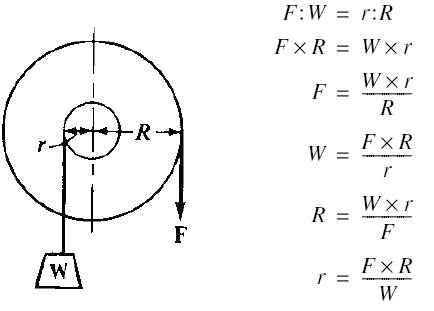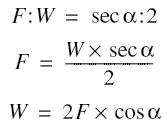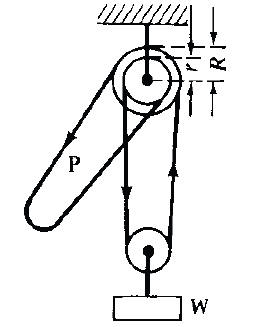
What force will be exerted at the periphery of a gear of 24 inches diameter, mounted on the same shaft as the drum and transmitting power to it, if one ton (2000 pounds) is to be lifted?
Here W = 2000; R = 12; r = 2.


A, B, C and D are the pitch circles of gears.

Then R2 = 15; R1 = 14; r1 = 6; and r = 5. Let R = 12, and r2 = 4.
Then the force F required to lift a weight W of 2000 pounds, friction being neglected, is:


The velocity with which weight W will be raised equals one-half the velocity of the force applied at F.




The velocity with which W will be raised equals 1/n of the velocity of the force applied at F.
In the illustration is shown a combination of a double and triple block. The pulleys each turn freely on a pin as axis, and are drawn with different diameters, to show the parts of the rope more clearly. There are 5 parts of rope. Therefore, if 200 pounds is to be lifted, the force F required at the end of the rope is:




